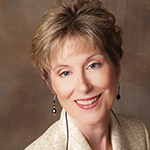Insights from the Medical Education Year in Review
WASHINTON, D.C.—In the session Medical Education Year in Review at ACR Convergence, David Leverenz, MD, MEd, associate professor of medicine at Duke University School of Medicine, Durham, N.C., and founder of RheumMadness, a free educational tournament funding by a Clinician Scholar Educator Award from the Rheumatology Research Foundation, gave a wide view of rheumatology professional education. He highlighted selected major studies published between January 2023 and September 2024, and focused on three main areas: Who are we? What are we doing? Where are we going?
A high-level takeaway from the session was that rheumatology as a profession is growing, but also facing expected workforce shortages and is under-represented geographically. Rheumatology is also becoming more diverse, but is still far short of where it needs to be. Also members of the profession have overcome incredible challenges, such as COVID, but burnout looms large.
Who We Are?
Opening his talk, Dr. Leverenz referenced the unease within the specialty around a projected workforce shortage, but cited a study he says offers encouragement. It showed that between 2009 and 2020, there was a 23% increase in adult rheumatologists, a 141% increase in nurse practitioners (NPs) and physician assistants (PAs), and an increase in the proportion female rheumatologists. However, unchanged in the data is the geographic maldistribution in the workforce and low percentage of practitioners in rural practice—only 5%.1
Despite these numbers, the study makes clear that a workforce shortage is still in the offing if the observed increase of 100 rheumatologists per year continues. “We are training more rheumatologists,” Dr. Leverenz said, “but still not enough.’
Race & Ethnicity
To understand the diversity among rheumatology trainees, Dr. Leverenz showed that the number of underrepresented fellows in rheumatology increased by 13% from 2006 to 2023, which is slightly lower than all subspecialty fellows (14% increase) and lower still when looking only at internal medicine residents (17% increase).
When it comes to diversity in rheumatology educational materials (i.e., Image Library, Kelley’s Textbook, New England Journal of Medicine articles on rheumatology or UpToDate), the proportion of images depicting people of color remains smaller than the overall population, as well as for what you would expect in disease prevalence in those populations.
“Diversity and equity are improving,” Dr. Leverenz said, “but we’re still not where we need to be.”
Mental Health



